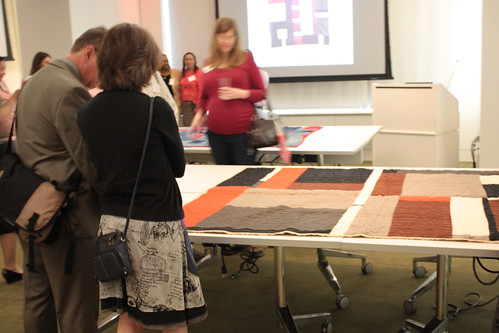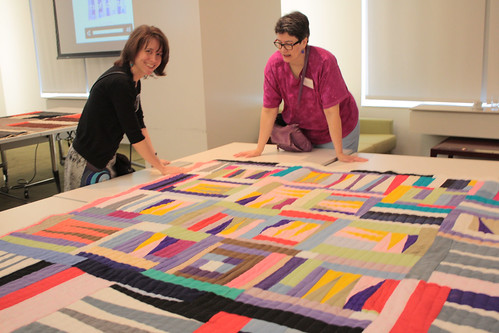
(Deborah and another guest discuss quilt construction)
I had the pleasure last weekend to have just such an experience. On Friday, long time blog (and now real-life) friend Tonya invited Deborah and I to join her for a special presentation by Gee's Bend quilters Mary Lee Bendolf and Loretta Pettway of their story and many of their quilts.

(Deborah chats with Mary Lee Bendolf about her work)
The event was small, and held at a law office hoping to help them find suitable venues for the quilts to be part of a permanent collection. It was unlike the usual shows, but absolutely wonderful to chat with the quilters, and to see the quilts up close -- and even touch them!

(Deborah and Tonya admire -- and touch! -- a quilt)
Saturday, I took Tonya as my guest and met Deborah at a regional SAQA meeting. There was a particularly convivial atmosphere as we enjoyed seeing mini trunk shows from three members, and had a short but very informative presentation about critique techniques.
I'm confident in saying that all our heads were swimming with information and inspiration. Deborah and I both call ourselves art quilters, but our styles are quite different. Tonya considers herself first and foremost a Quilter with a capital Q. Our different approaches but common love for textiles combined to easily fill the spaces between our formal outings with lively conversation about art, utility, definitions of quilts, show and tell, lots of laughter, goals and upcoming projects. By the time I got home, I was exhausted, but I was full in head and heart, and energized in spirit.





















